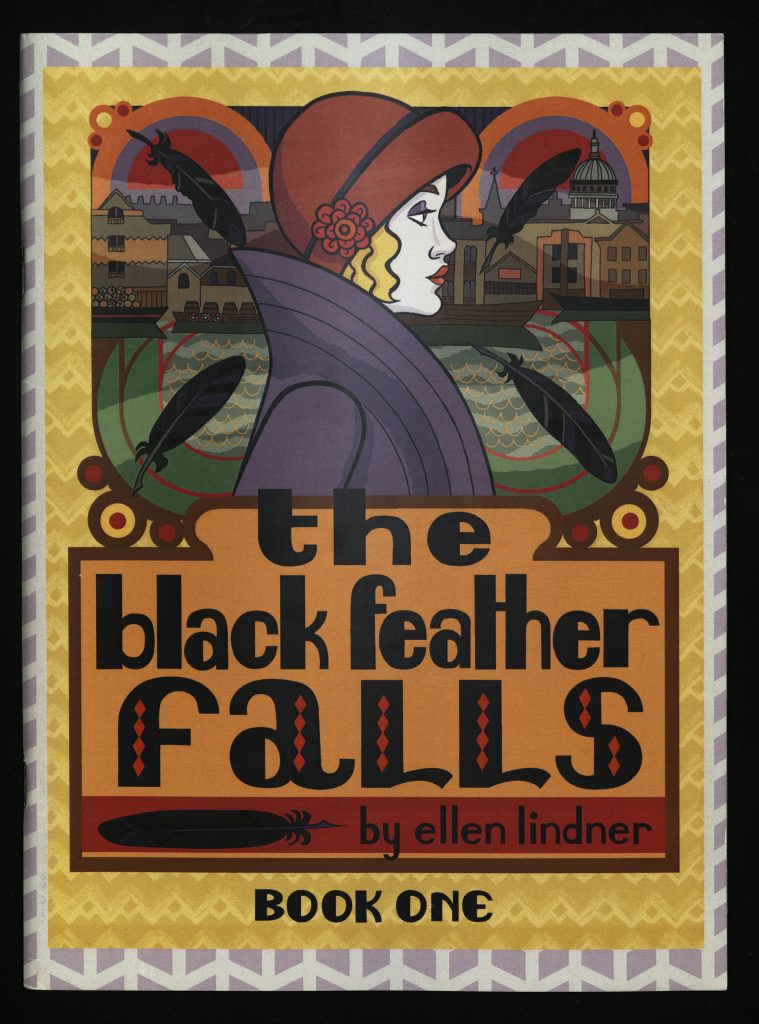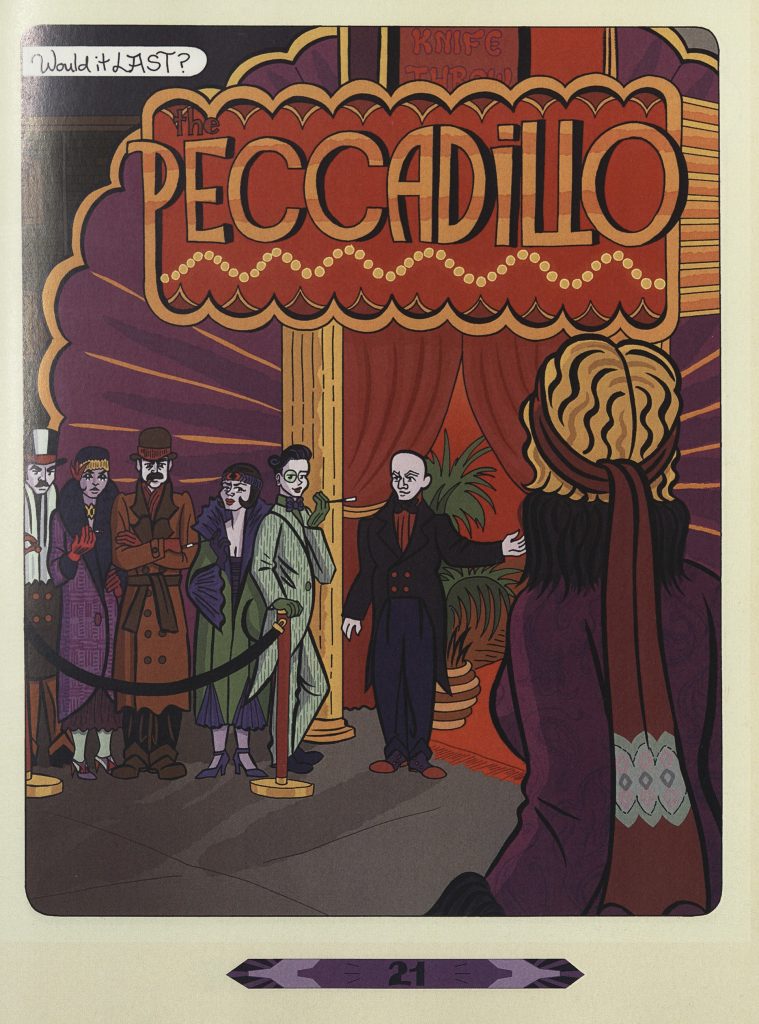
Ellen Lindner’s The Black Feather Falls is part of the recently-acquired collection of comic books that were formerly owned by Terry Wiley.
The Black Feather Falls was originally published in three volumes that were collected and published as a single-volume graphic novel under the same title in 2015. The series is set in the 1920s and features as its main character Tina Swift, a young American woman, who has recently moved to England and works in a dress shop in London. The street outside the shop becomes a murder scene where Tina discovers a black feather – a clue to the crime, but one that the police dismiss. Tina decides to solve the crime herself with the help of Miss McInteer, a stenographer at the local paper, which leads her back into the past, to events of the First World War. The series was nominated for the Ignatz award for Outstanding Series in 2014; the awards recognise outstanding achievements in cartooning and comics and are held annually in the United States.

This work is of particular significance for its blending of literary genres. The interwar mystery that comprises the action of the plot relates to the interwar ‘Golden Age’ of detective fiction that occurred both in Britain and the United States. Lindner’s choice of a main character that is both a professional woman, working to live independently, and amateur detective also relates to the growing number of women embarking on careers in this period. The artwork for this series demonstrates a use of limited colour palette and strong outlining to characters and scenes, showcasing Lindner’s distinctive style whilst detailing many aspects of the 1920s setting such as the clothing fashions and interior designs. The appearance of cosmetic items such as lipstick and compacts, along with ‘flapper’ style dresses of a looser fit and shorter hairstyles with cloche hats relate to the specific context of the 1920s that saw these changes in dress styles, accessories and millinery.
The Wylie (Terry) Comics are currently being catalogued. These three volumes are part of a collection that spans several decades of comics and graphic novels, and many artists, authors and cartoonists. These are not the only examples of the use of crime and mystery genres; there are also many volumes of Paul Grist’s Kane series about a detective working in a precinct of a fictional American city and works set in previous decades and fantasy worlds are also well represented. Special Collections and Archives also has many items relating to independent publishers, including the archives and collections of Iron Press, Bloodaxe Books and Flambard Press, and of illustrators including satirical prints, such as those in the James Gillray Collection, and children’s books.
